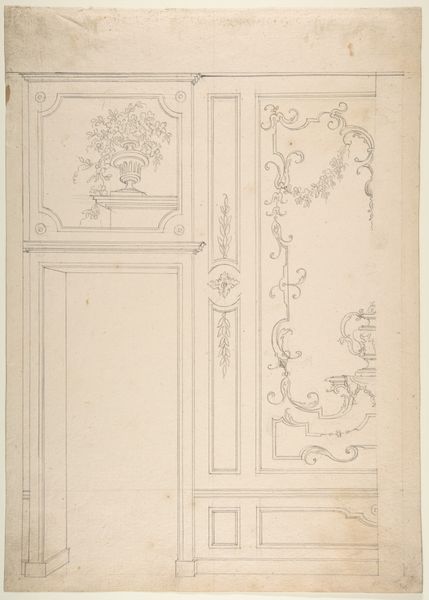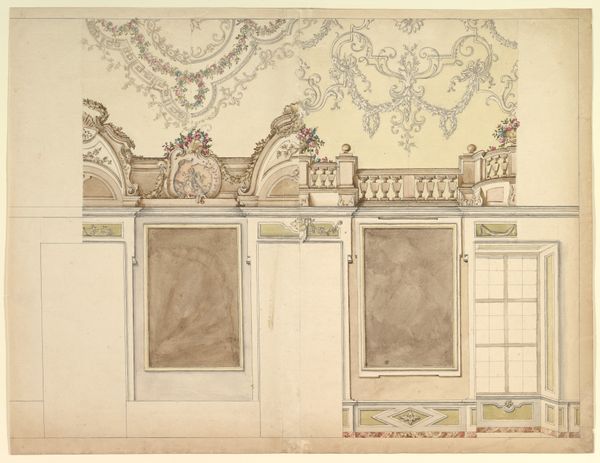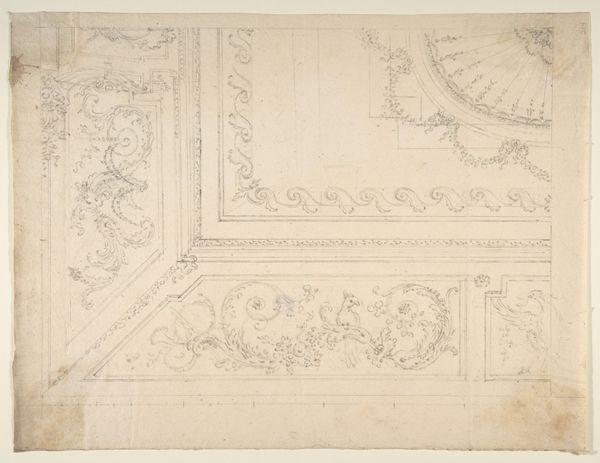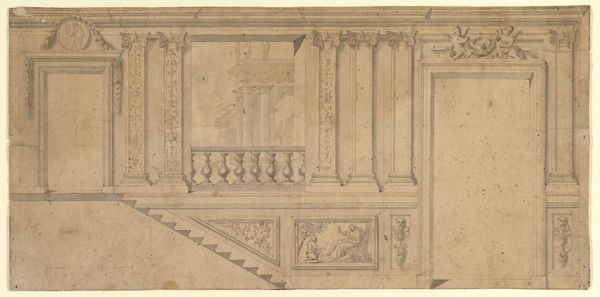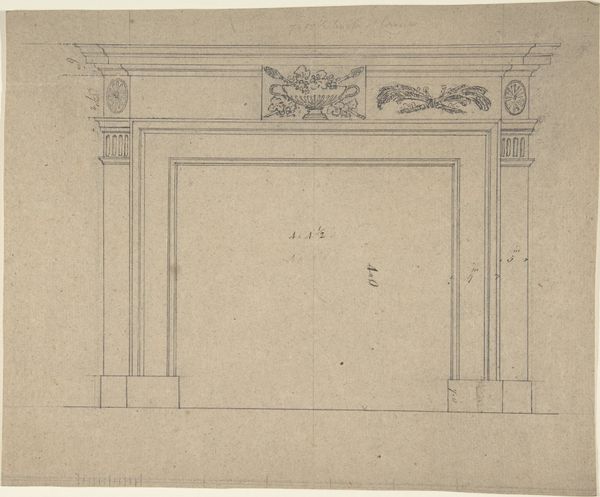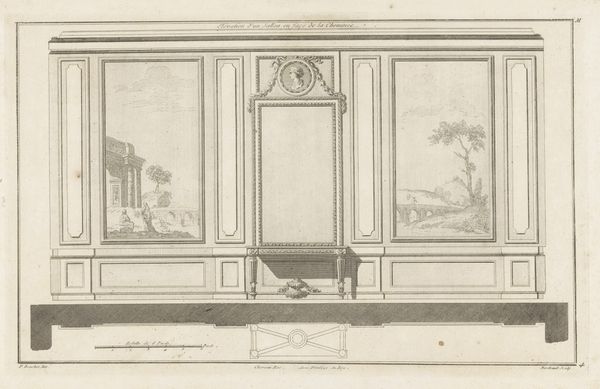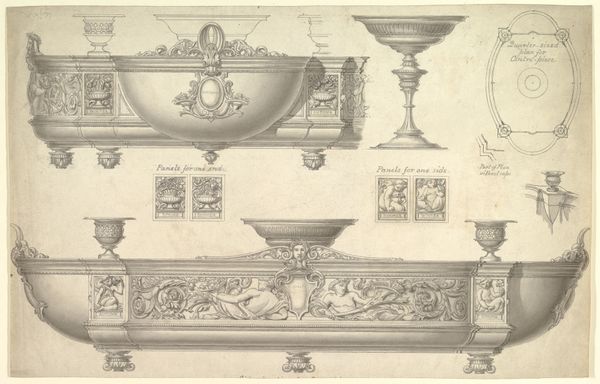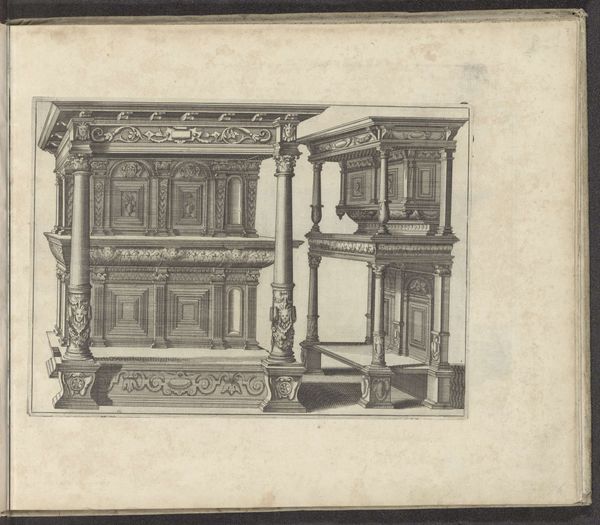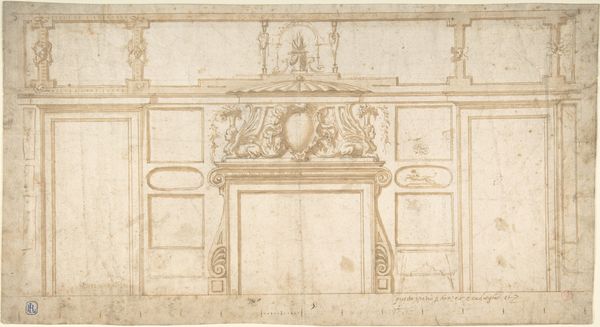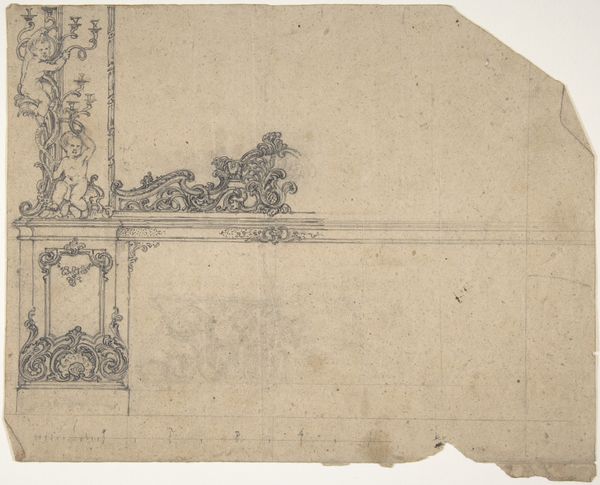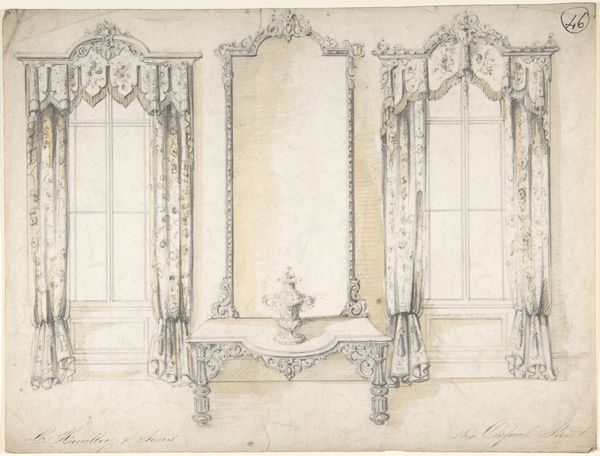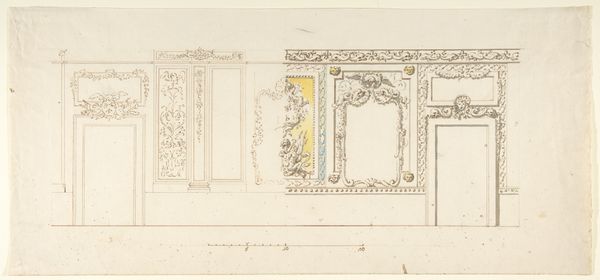
drawing, print, engraving, architecture
#
drawing
#
baroque
# print
#
engraving
#
architecture
Dimensions: 13 x 17 13/16 in. (33 x 45.3 cm)
Copyright: Public Domain
Curator: This is a captivating design for a door, dating from sometime in the 18th century. Created by Leonardo Marini, this architectural rendering employs drawing and engraving techniques, revealing meticulous Baroque sensibilities. What's your initial read on this piece? Editor: My immediate impression is one of stark elegance. The limited palette, just the ink on paper, focuses my attention on the intricate workmanship, the labor obviously involved in creating something so precisely ornate. Curator: Exactly. Marini's vision reflects the values and priorities of his era. This design, undoubtedly intended for the elite, displays Baroque ideals. The presence of a bust hints at neoclassical ideals. These design choices weren't made in isolation but express contemporary ideas about social status. Editor: And the materiality speaks volumes about power dynamics of the period. Engravings allowed for dissemination of such designs, acting as models for craftspeople. Whose labor was required to fulfill this concept? Where did the raw materials come from and under what social conditions were they produced? Curator: Those are vital considerations. How was woodworking conceived? To what extent did individual artisans shape or follow these pre-approved design choices? I imagine access to these designs became a mark of distinction amongst certain artisan workshops, deepening socioeconomic divisions within those industries. Editor: The distribution of that design itself created hierarchies amongst labor itself. High art is just another part of material culture when you examine the full breadth of it, I'd argue. What was initially designed only as an idea needed material input to exist. And consumption. Someone needed to *want* this to be fabricated. Curator: Agreed. By viewing design as an element deeply entwined with socioeconomic structures, we gain insight into cultural narratives and the social conditions. Editor: Definitely, the interaction between production, dissemination, and social aspirations are really the keys here for truly understanding a piece such as Marini's design. The object gives new understanding about how power manifested during that period and potentially today, too.
Comments
No comments
Be the first to comment and join the conversation on the ultimate creative platform.

